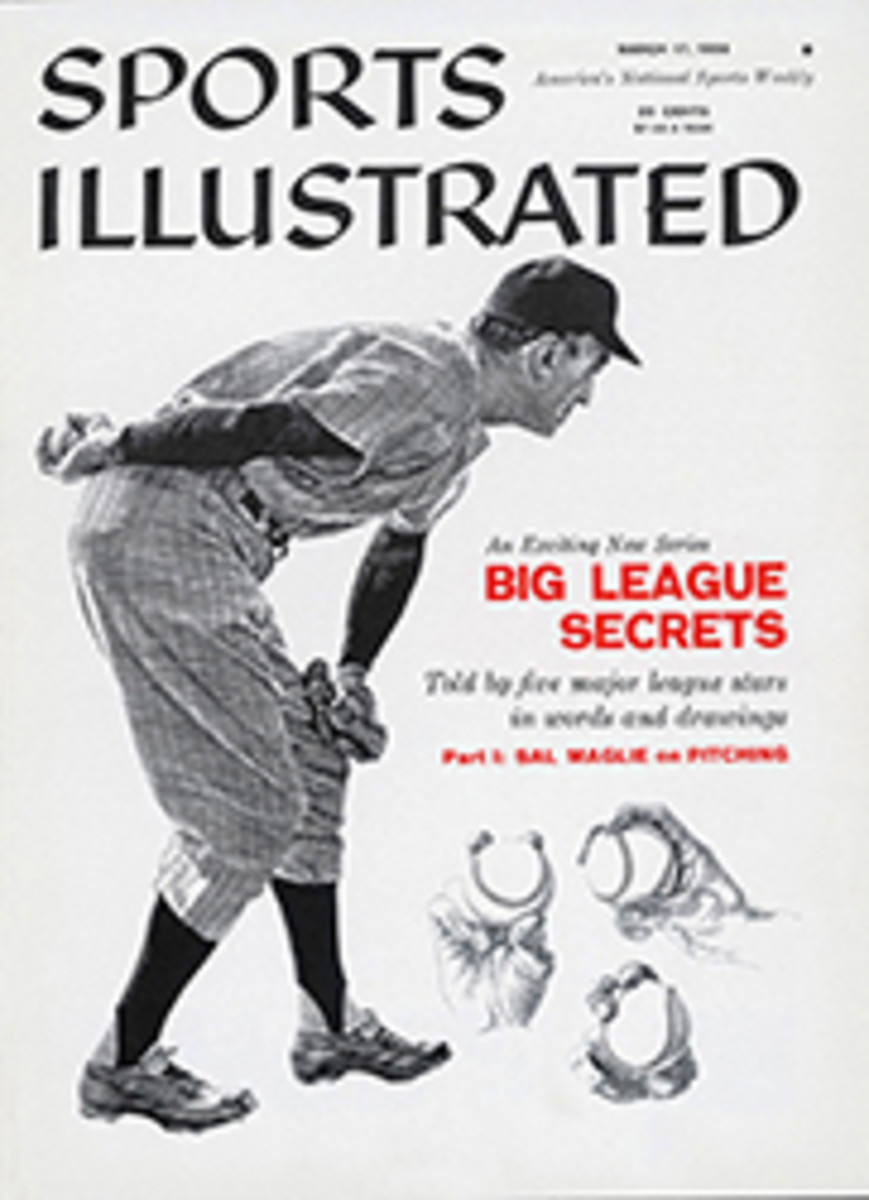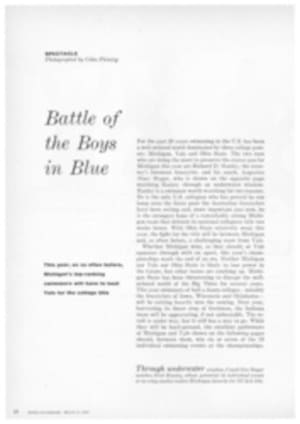
Hitting through correctly
Teaching a person to overcome a slice or fade gives me great satisfaction. My best results are obtained, I find, by drawing a comparison between the hitting action of the baseball player who can only hit to the opposite field and the golfer who tries to push the ball toward the hole with his arms. The weak-hitting batter who hits to the opposite field doesn't have enough wrist and hand action to bring the end of the bat around. The good batter is usually a pull hitter: a snap of the wrist brings the bat from the rear of the plate, over the plate, and around. The hands cross over right after impact. The same applies in principle in golf. After impact, as you swing through to your finish, the left arm rolls out of the way, with the left elbow moving so that it points to the ground as it turns—in the same manner in which the right elbow pointed toward the ground during the back-swing.
A golfer will get a good, clear idea of the correct hit-through action, I believe, if he takes his golf club and swings it as if it were a baseball bat, observing the meanwhile how the hands turn over almost immediately after impact. When you are engaged in this exercise—swinging the club like a baseball bat—you will also notice that if you draw your left elbow up and away from the plate, your swing has no power, and it is difficult to follow through. Your lifted left arm is in the way. The same is true in golf. To hit through the ball freely and correctly, that left elbow must stay in relatively close to your body.
JOE CANNON, Farmington Country Club, Charlottesville, Va.
PHOTO
ILLUSTRATION
correct
ILLUSTRATION
incorrect
NEXT WEEK: Kathy Cornelius on putting the long ones

